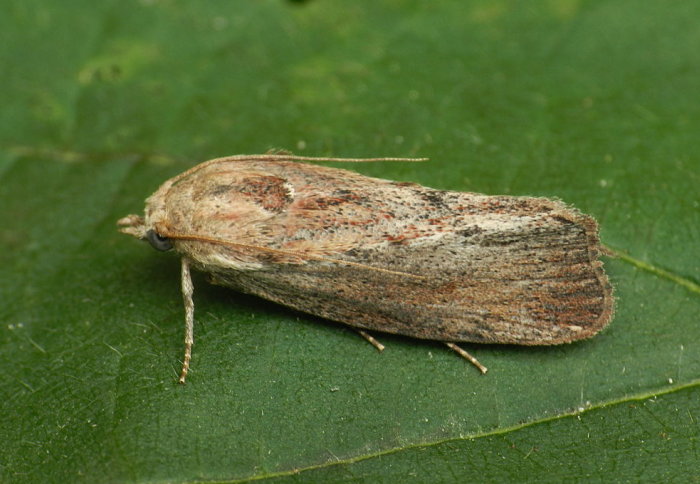How can moths help us to develop better tuberculosis treatments?

Galleria mellonella, known commonly as the greater wax moth or honeycomb moth
PhD student Masanori Asai discusses why he's using moth larvae to study tuberculosis (TB) infection.
In an interview for the Microbiology Society, Masanori Asai explains his latest research and the challenges of working with Mycobacterium tuberculosis in the lab.
Tell us a little about your research
I am an NC3Rs-funded PhD student in the Department of Medicine. My project focuses on the development of a non-mammalian TB infection model using the larvae of the insect Galleria mellonella (greater wax moth). Using this model, I am studying the role of innate immunity during the early stages of TB infection, and as a high-throughput drug screen for novel TB therapeutics. I hope that this model will serve as a bridge between in vitro and mammalian drug studies, thereby greatly reducing the number of mammals used in TB research.
Why is Mycobacterium tuberculosis such a challenging organism to work with?
Mycobacterium tuberculosis is a challenging pathogen to work with for a number of reasons, but the most challenging aspect is safety. As a category C pathogen, work is limited to those in a negatively pressured biosafety level 3 facility (BSL3). Therefore, research involving live pathogenic M. tuberculosis is limited to institutions with such facilities (although TB research can be done with surrogate Mycobacterial species). Beyond safety, as a slow-growing pathogen, obtaining data as colony forming units can take 2–3 weeks. Conventional animal infection studies (e.g. mice) can take over six months and requires a further specialised BSL3 facility with animal housing.
How do you manage the risks of working with this pathogen in the lab? Do you have to take extra precautions?
To manage the risk in our lab, each lab user is trained for six months and must pass an oral exam before full access is granted. We wear appropriate clothing and follow BSL3-specific standard operating procedures, which minimise the risk of exposure and contamination of both yourself and the lab. All work must be carried out in a Class 1 Safety Cabinet and waste must be carefully disposed of, following strict guidelines. We regularly carry out refresher meetings and emergency exercises to ensure that all users, regardless of the frequency of their lab use, are accustomed to the safety procedures.
What encouraged you to pursue a career in the field of microbiology?
My interest in microbiology originally stemmed from learning about the diversity and abundance of microbes at school. Towards the end of my undergraduate studies, I decided to pursue a career in studying infection and immunity, as I was made more and more aware of the impact of infectious disease in society and the rising issues of antimicrobial resistance.
‘Galleria mellonella - a novel infection model for the Mycobacterium tuberculosis complex’ by Yanwen Li et al., is published in Virulence.
This article has been adapted and republished here with kind permission from the Microbiology Society.
Image credit: Adam Furlepa / Wikimedia Commons
Article supporters
Article text (excluding photos or graphics) © Imperial College London.
Photos and graphics subject to third party copyright used with permission or © Imperial College London.
Reporter
Ms Genevieve Timmins
Academic Services